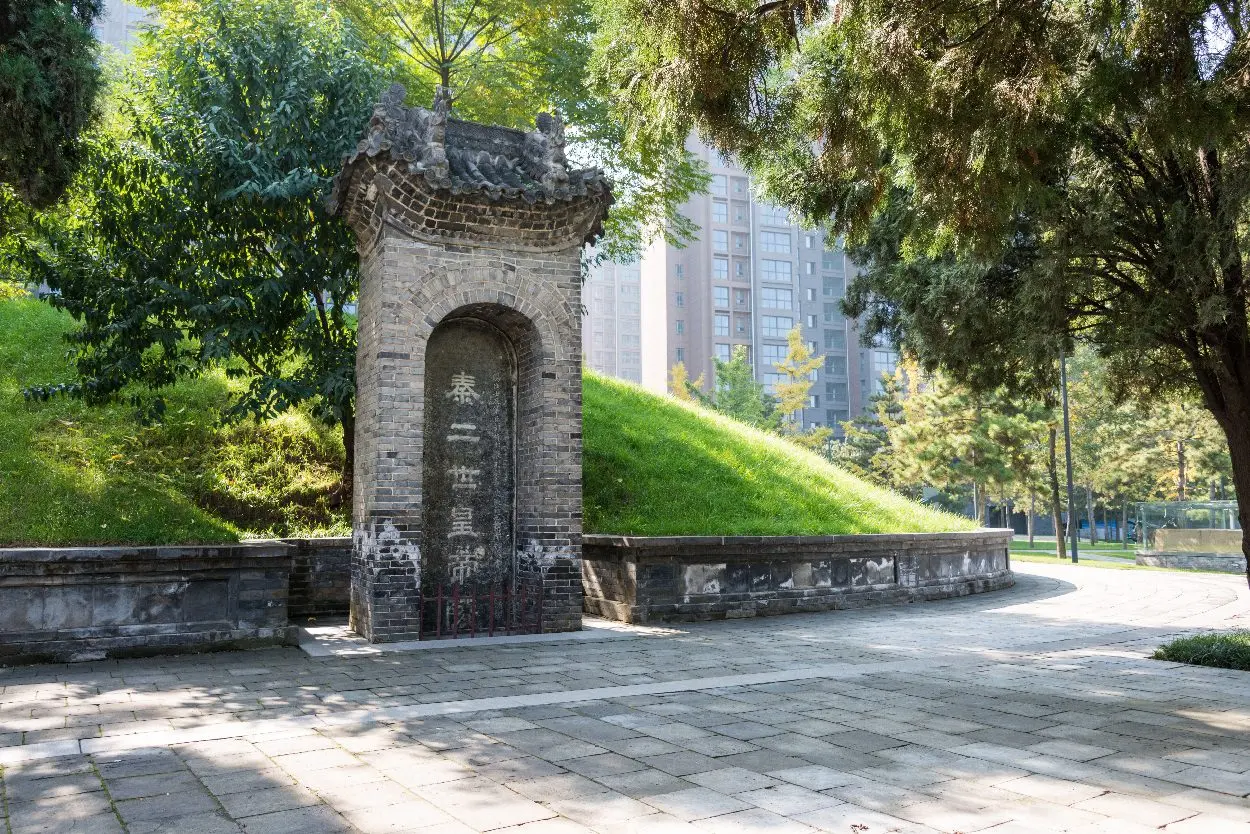Qin Er Shi, born Ying Huhai, was the second emperor of the Qin dynasty, the ruling family of a unified China – established by the first emperor, Qin Shi Huang.
Following the death of Qin Shi Huang in 210 BC, his passing was kept a state secret by the Prime Minister, Li Si, as Qin Shi Huang had planned to live for eternity, thus never declaring a successor in a will.
His eldest son, Fusu, was traditionally the heir apparent, however, Li Si and the chief eunuch, Zhao Gao, forged a letter from Qin Shi Huang, ordering his son to commit suicide on his death. Fusu accepted the forged command and killed himself, opening the line of succession to his brother, Ying Huhai.
Ying Huhai’s involvement in the forgery is unknown, however, he ascended to the throne in 210 BC and took the regnal name of Qin Er Shi, meaning “Second Generation of the Qin”.
Qin Er Shi was a weak ruler, essentially being a puppet emperor controlled by Zhao Gao, who at this time was elevated to the tile of the Qin prime minister. According to contemporary texts, Qin Er Shi was the “Son of Heaven”, and that his own voice must never be heard, and his face must never be shown, meaning that high ministers rarely had the opportunity to address the emperor, except when in the presence of Zhao Gao.
Qin Er Shi’s reign was a period of rebellions and extreme civil unrest, with Zhao Gao pressing the emperor to imprison or sentence to death members of the royal family or ministers and generals who showed disloyalty.
Despite most uprisings being suppressed, the bulk of Qin forces were defeated at the Battle of Julu, a conflict to crush the insurgent state of Chu. Despite the loss of over 300,000 soldiers, the emperor failed to grasp the full extent of the defeat, as his courtiers had concealed the truth in fear of being punished. It was only when a loyal eunuch revealed the harsh reality to Qin Er Shi, who then attempted to capture Zhao Gao and hold him accountable for the deception.
Zhao Gao conspired with his loyal soldiers and forced the emperor to commit suicide at the age of 22, only 3 years after ascending to the throne. He was succeed by Ziying, who was made the “King of Qin state”, a reduced title as the Qin Empire was fragmented, however Ziying was killed by Zhao Gao only 46 days into his reign.
In the weeks after Qin Er Shi’s death, he was condemned by Zhao Gao and denied a royal burial. Unlike his father, who was buried in a 76-metre-tall mound surrounded by an extensive necropolis and the Terracotta Army, Qin Er Shi was buried in a commoners tomb, a mound measuring only 5-metres in height.
The tomb is located today in Xi’an City in China’s Shaanxi Province, where in 1956, was included in the first round of provincial cultural relics to be protected by the Shaanxi Provincial People’s Committee. More recently, the site of the tomb site has been developed into a cultural park and museum.
Header Image Credit : Alamy





